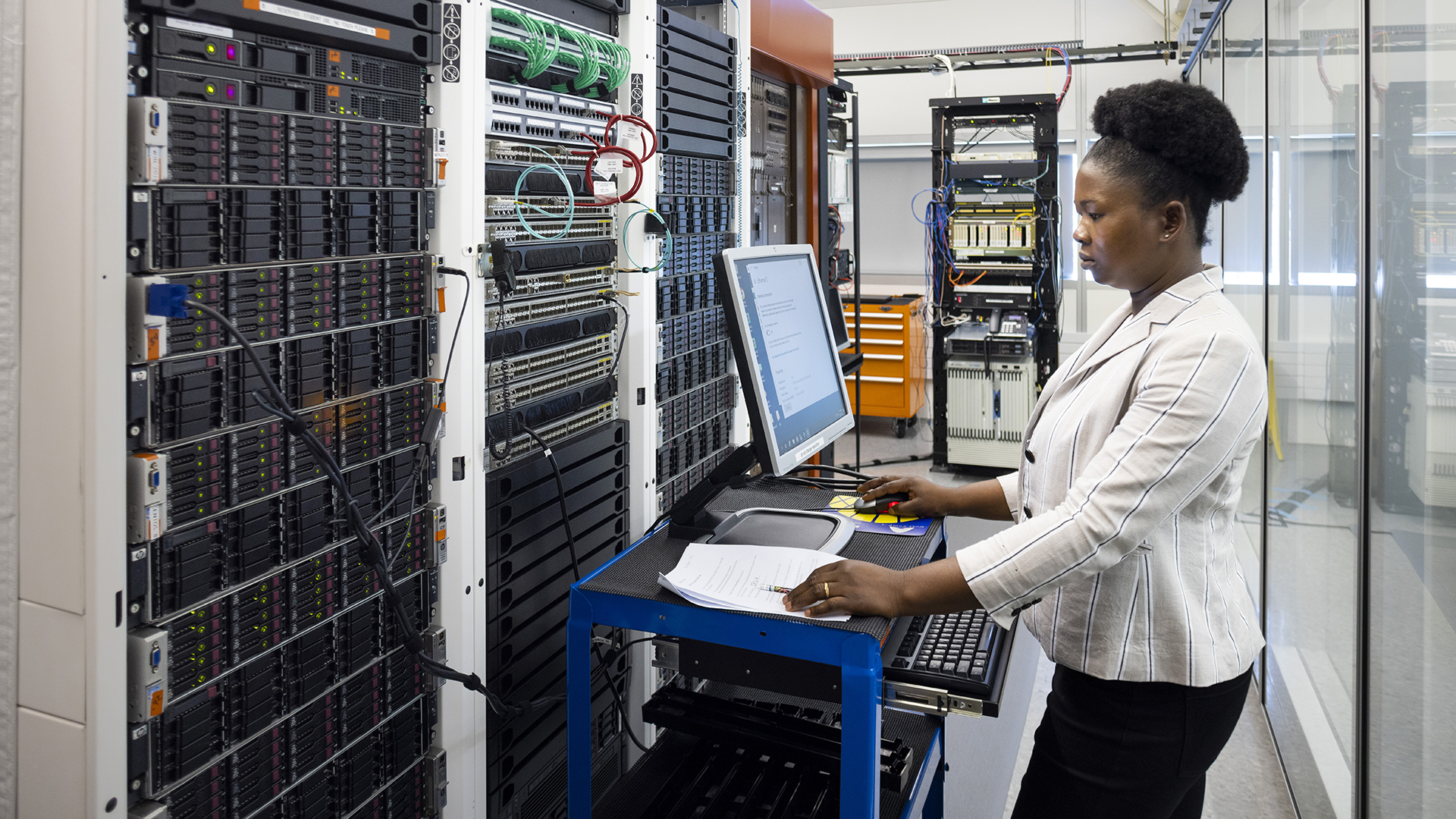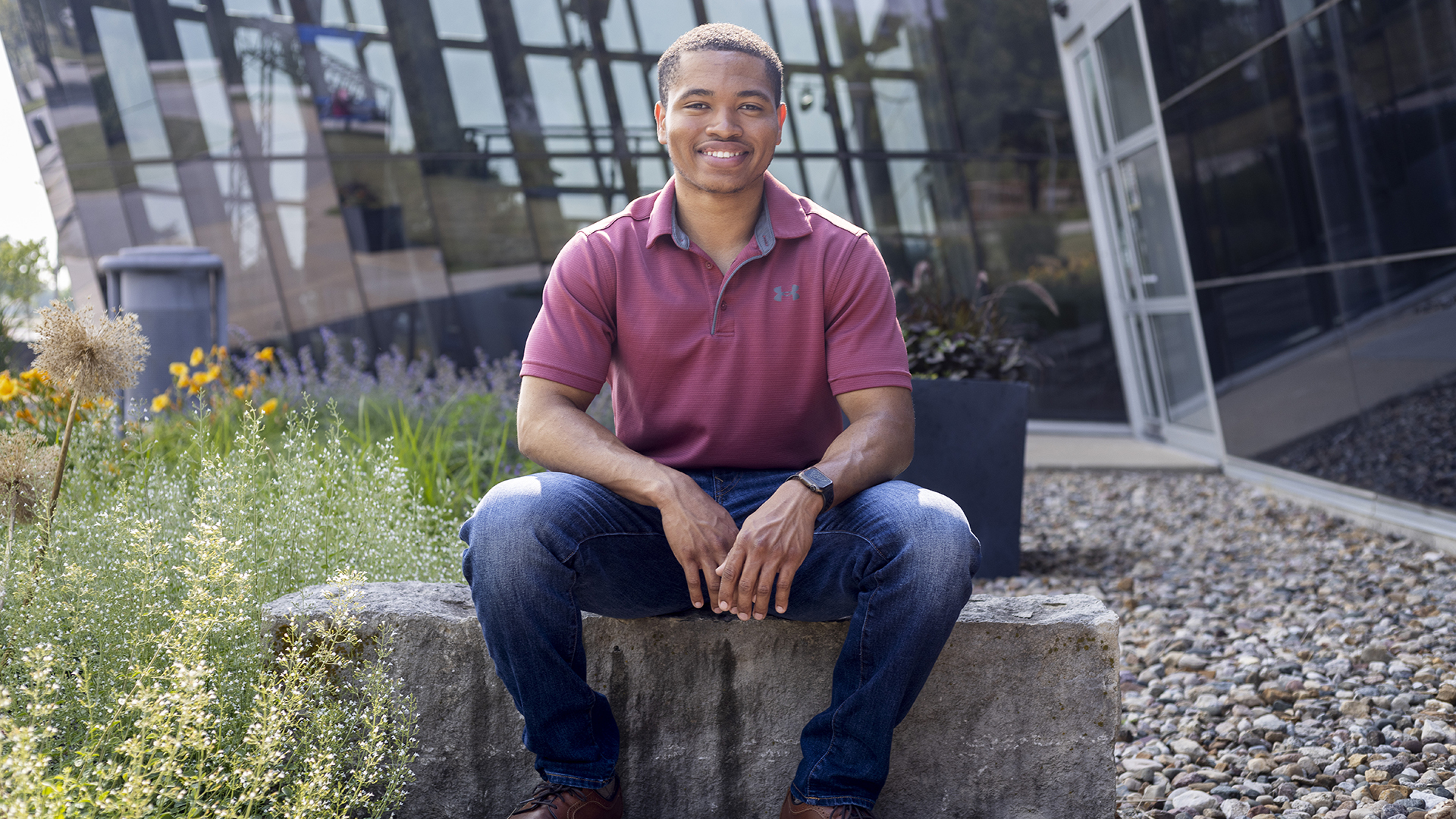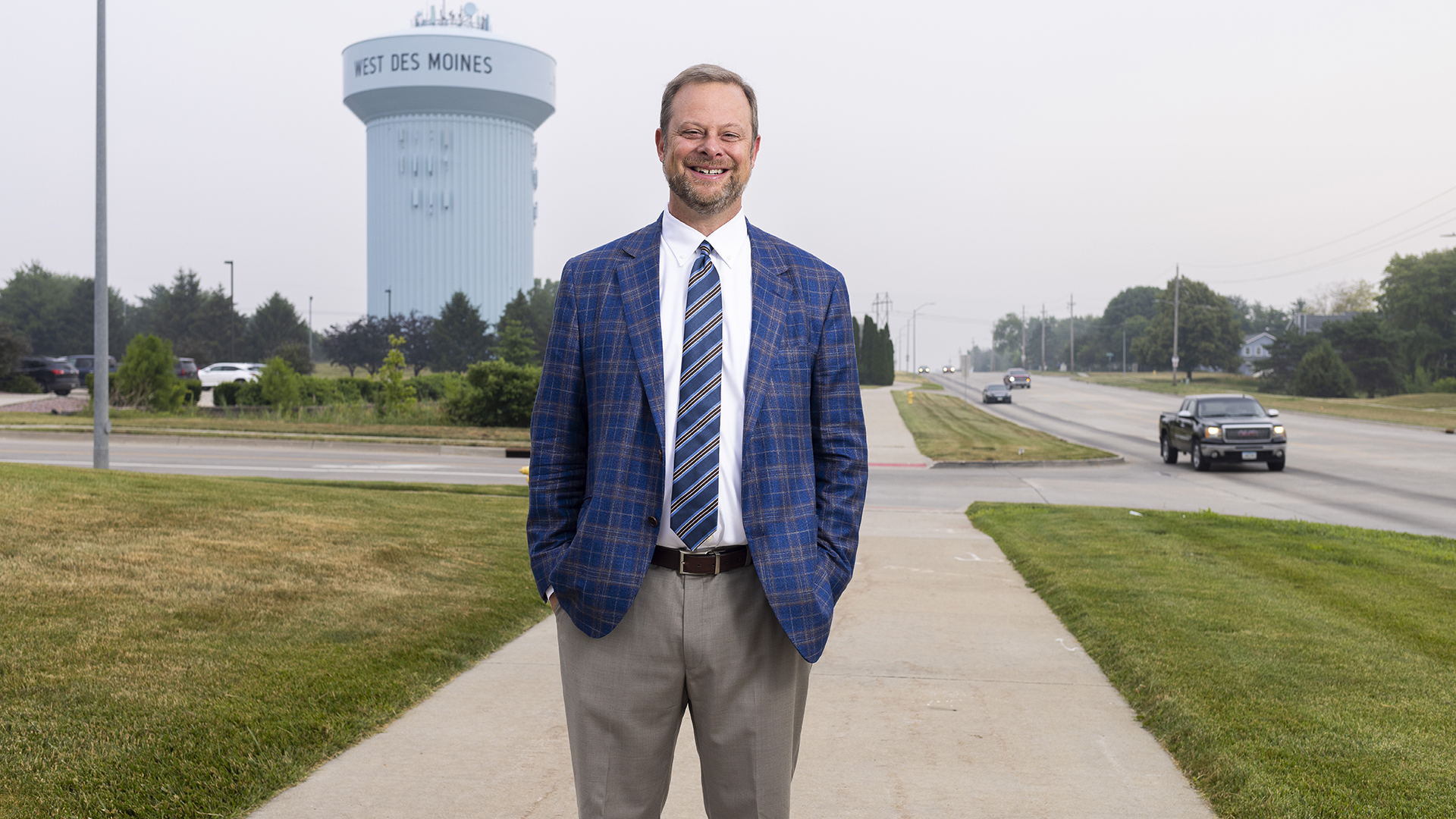
How a small city in Iowa became an epicenter for advancing AI
For the past few years, Microsoft has been powering the future of AI from a cluster of datacenters located amidst sprawling farmlands and rural roads in Iowa.
Iowa is home to an Azure supercomputer Microsoft built for artificial intelligence research company OpenAI to train breakthrough AI models capable of assisting with an increasing range of tasks, from analyzing documents to writing and debugging computer code and helping plan vacations. That work has made a small city in America’s heartland an unlikely epicenter for the AI revolution that has captivated the world since ChatGPT, OpenAI’s conversational AI system, was released in November 2022.
“These supercomputing systems are really the lifeblood of our research,” said OpenAI’s Katie Mayer, who manages the company’s partnership with Microsoft. “To do the work that we’re doing at this scale and to develop really novel AI capabilities, you need these systems. They’ve really accelerated the rate of progress that we are all benefiting from now.”
Those systems, hosted in Azure, have been instrumental in developing OpenAI’s GPT-4 model that is now embedded across a range of Microsoft technologies, including the new Bing search engine and a growing number of assistive AI-powered copilot applications that help people accomplish complex cognitive tasks, such as Microsoft 365 Copilot for productivity apps and Microsoft Security Copilot for cybersecurity.
The Iowa supercomputer is among the largest and most powerful in the world, according to Microsoft. The company plans to continue investing in datacenters in the U.S. to benefit its customers and further America’s leadership in AI innovation, said Noelle Walsh, Microsoft’s corporate vice president for Cloud Operations and Innovation.
“I think this is a wonderful strategic advantage for the U.S.,” Walsh said. “This technology is going to change our lives and solve problems that we’ve never been able to solve.
“I’m delighted we can deliver this and match our power consumption with renewable energy while being water efficient. We strive to be good neighbors in the communities in which we operate and are proud to be part of West Des Moines, Iowa.”
Microsoft opened its first datacenter in West Des Moines in 2012, attracted by the area’s availability of land, skilled workforce, large fiber optic network and the state’s reliable and renewable energy resources — Microsoft is matching 100% of the energy used by its Iowa datacenters with renewable energy. Two additional Microsoft datacenter campuses in West Des Moines followed, and Microsoft plans to open a fourth and fifth there by end of 2023.
When Microsoft and OpenAI formed a partnership in 2019 to collaborate on AI technologies and make AI more broadly available, the physical datacenter infrastructure to host a supercomputer in Iowa was already in place. OpenAI needed supercomputing power on an unprecedented scale, and the two companies began working together to develop a custom computing system in Iowa to train large AI models.
“The need for custom systems really comes down to the complexity of these workloads,” Mayer said. “You’re doing these incredible computations at scale and have to have reliability and consistency. I think most folks underestimate how hard it is to train these models on systems of this size and the engineering challenges to do that.
“Being able to directly control and design for the things that you’re targeting has been amazingly useful in getting to the highest-quality AI model,” Mayer said. “Microsoft has been a really great partner in the process of designing these systems from scratch and then also managing them as we continue to push the boundaries of these workloads.”
Supporting the community
Iowa Senators Charles E. Grassley and Joni Ernst expressed their support for Microsoft’s work in Iowa, emphasizing the importance of building the next generation of AI technology in the United States. As America competes with a growing number of players to advance artificial intelligence, investments in AI are helping bolster the U.S.’s position as a global AI leader while also providing jobs and other important benefits for local communities, they said.
Microsoft’s work, Grassley said, is furthering a technology evolution in Iowa that dates back to the invention of the first electronic digital computer at Iowa State College in the 1930s.
“The first digital computer was created in Iowa, and now we’re seeing the creation of an advanced supercomputing infrastructure powering the future of AI right here in our state,” he said. “Microsoft is supporting local communities with investments and jobs where these next-generation datacenters are located.”
Iowa, Ernst said, “has a long history of innovation, and Microsoft has been a linchpin. I’m proud to see my home state as ground zero for new and future technologies, all while supporting our local communities with jobs and investments.”
There are now about 300 full-time employees working at Microsoft’s Iowa datacenters — making Microsoft the ninth-largest employer in West Des Moines, which has a population of about 70,000 — and Microsoft expects that number to double in coming years as new facilities open. More than 800 construction jobs are supported by the ongoing datacenter development.
As its footprint in Iowa has grown, Microsoft has invested over $2.5 million in community programs across more than 70 partners in the Greater Des Moines area, most of them nonprofit organizations. The funding has supported tree planting in urban areas, financial and computer classes for immigrants and refugees, skilling and career development for underserved populations, and the Microsoft Datacenter Academy, a workforce development program for IT sector employment.
Since launching in 2018, the Microsoft Datacenter Academy has expanded to 12 locations in the United States, Europe and Asia. Microsoft works with local colleges to develop curriculum for the program and provides equipment for training labs, as well as scholarships, opportunities for mentoring and employment in Microsoft datacenters.
Geormain James-Turner, 23, was planning to study business and had little interest in or exposure to technology besides playing video games as a kid. But through his uncle, who runs a nonprofit organization in Des Moines that Microsoft supports, James-Turner learned about the Microsoft Datacenter Academy. He was offered a scholarship and decided to enroll.
James-Turner began taking academy classes at Des Moines Area Community College in early 2022 and is working toward earning several IT certifications. In December, he was hired at a Microsoft datacenter in West Des Moines and discovered that he enjoys the autonomy, problem-solving and active nature of the work, which doesn’t require him to sit at a desk all day. He is now thinking about where his future in technology could lead.
“I want to advance into cloud computing,” he said. “I love working at the datacenter, but I feel like there’s so much more to learn and so much potential.”

Infrastructure and a diversified workforce
Microsoft’s Iowa datacenters have created additional property tax valuation that has enabled the city of West Des Moines to undertake major street projects and utility improvements totaling around $182 million, according to city officials. The work has extended municipal infrastructure to areas around the city, opening up about 4,500 acres of land for future development.
“There have been public improvement projects that I never thought I’d see in my lifetime, let alone my tenure here with the city,” said Clyde Evans, who recently retired as West Des Moines’ director of community and economic development after 32 years with the city.
Evans pointed to an 8.5-mile extension of Veterans Parkway, which now serves as the spine of a major roadway system spanning two counties, and the construction of a fiber cable network to provide high-speed internet service to homes and businesses throughout West Des Moines.
While the infrastructure work was initially done for Microsoft’s datacenters, Mayor Russ Trimble said, it will also benefit the surrounding areas, and the costs for those improvements will be recouped in future years through property taxes paid by Microsoft.
“That’s critical infrastructure that we would have needed to pay for somehow, and we would have struggled to pay for that,” Trimble said. “The valuation generated from the Microsoft datacenters has allowed us to put in the infrastructure needed for the datacenters themselves, but it’s also provided needed infrastructure for the entire area.”
The added property tax valuation enabled a local school district to make major improvements to a high school and middle school without having to increase a tax levy to fund the work. Microsoft paid for a new water tower that expanded the city’s distribution system and also provided funding for a new amphitheater, Evans said.
Microsoft’s datacenters, Trimble said, are helping to diversify West Des Moines’ workforce and providing new opportunities in the tech sector.
“We are very reliant on banking, finance, insurance. It is great to be able to diversify our offerings here and have these high-tech jobs in our community,” Trimble said. “We are extremely proud to have Microsoft in our city. Microsoft has been an incredible corporate citizen.”

Advancing AI supercomputing
The supercomputing resources pioneered in Iowa will serve as a blueprint as Microsoft continues to expand its datacenter presence. Microsoft plans to build additional datacenters in the U.S. to train AI models, further advancing the company’s commitment to build new AI supercomputing capabilities to serve the public.
Lessons learned in developing supercomputing resources for AI training are also proving useful in advancing more distributed infrastructure that helps AI models analyze data and other information to generate outputs, a process known as inferencing. Pushing boundaries in Iowa has also helped Microsoft make similar Azure infrastructure optimized for AI model training available to other customers via Azure AI supercomputing capabilities in the cloud.
Meanwhile, Microsoft and OpenAI are continuing to work together to design more powerful Azure supercomputing systems to train increasingly complex models. But Iowa, Mayer said, has the distinction of being the place where the two companies’ pioneering work in supercomputing originated.
“As you think about the next wave of technological progress, it’s amazing that this power has really come from Iowa to a degree,” she said. “I think that’s something that should be part of the story in history.”
Related links:
- Read more: How Microsoft’s bet on Azure unlocked an AI revolution
- Learn more: Azure AI infrastructure
Top image: Patience Mbi, a Microsoft Datacenter Academy student, works in a lab at Des Moines Area Community College that has equipment donated by Microsoft. Photo by John Brecher for Microsoft.

